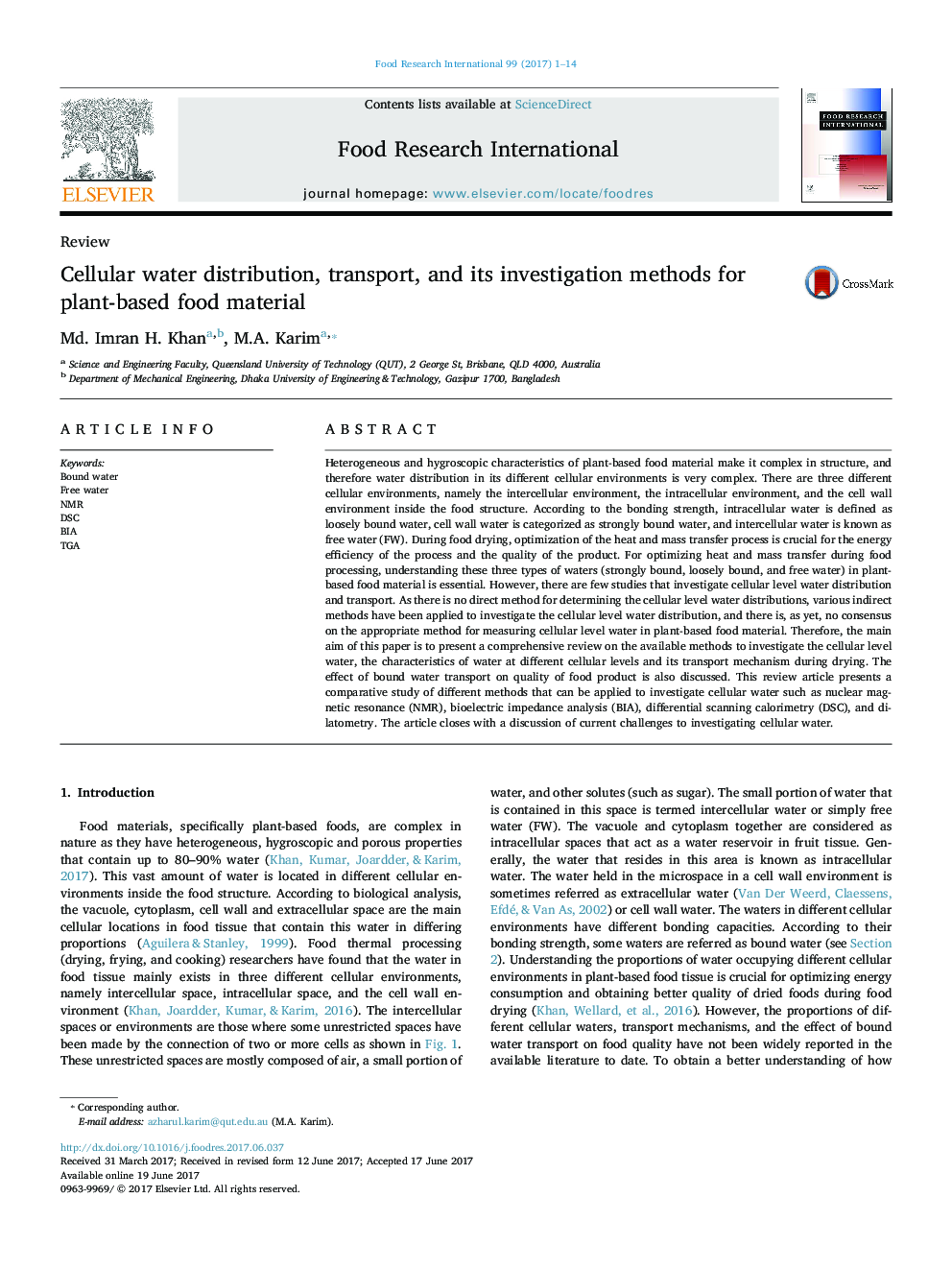| کد مقاله | کد نشریه | سال انتشار | مقاله انگلیسی | نسخه تمام متن |
|---|---|---|---|---|
| 5768074 | 1413213 | 2017 | 14 صفحه PDF | دانلود رایگان |
- This paper presents an outline of cellular water distribution and its transport mechanism.
- Classification of various cellular water in plant-based food material and its characteristics is presented.
- Different methods for investigating different cellular water are discussed.
- NMR is the most appropriate methods to investigate cellular water in plant-based food material.
Heterogeneous and hygroscopic characteristics of plant-based food material make it complex in structure, and therefore water distribution in its different cellular environments is very complex. There are three different cellular environments, namely the intercellular environment, the intracellular environment, and the cell wall environment inside the food structure. According to the bonding strength, intracellular water is defined as loosely bound water, cell wall water is categorized as strongly bound water, and intercellular water is known as free water (FW). During food drying, optimization of the heat and mass transfer process is crucial for the energy efficiency of the process and the quality of the product. For optimizing heat and mass transfer during food processing, understanding these three types of waters (strongly bound, loosely bound, and free water) in plant-based food material is essential. However, there are few studies that investigate cellular level water distribution and transport. As there is no direct method for determining the cellular level water distributions, various indirect methods have been applied to investigate the cellular level water distribution, and there is, as yet, no consensus on the appropriate method for measuring cellular level water in plant-based food material. Therefore, the main aim of this paper is to present a comprehensive review on the available methods to investigate the cellular level water, the characteristics of water at different cellular levels and its transport mechanism during drying. The effect of bound water transport on quality of food product is also discussed. This review article presents a comparative study of different methods that can be applied to investigate cellular water such as nuclear magnetic resonance (NMR), bioelectric impedance analysis (BIA), differential scanning calorimetry (DSC), and dilatometry. The article closes with a discussion of current challenges to investigating cellular water.
163
Journal: Food Research International - Volume 99, Part 1, September 2017, Pages 1-14
